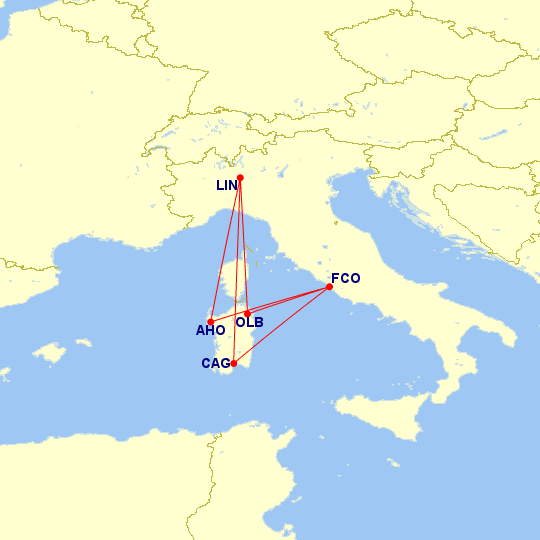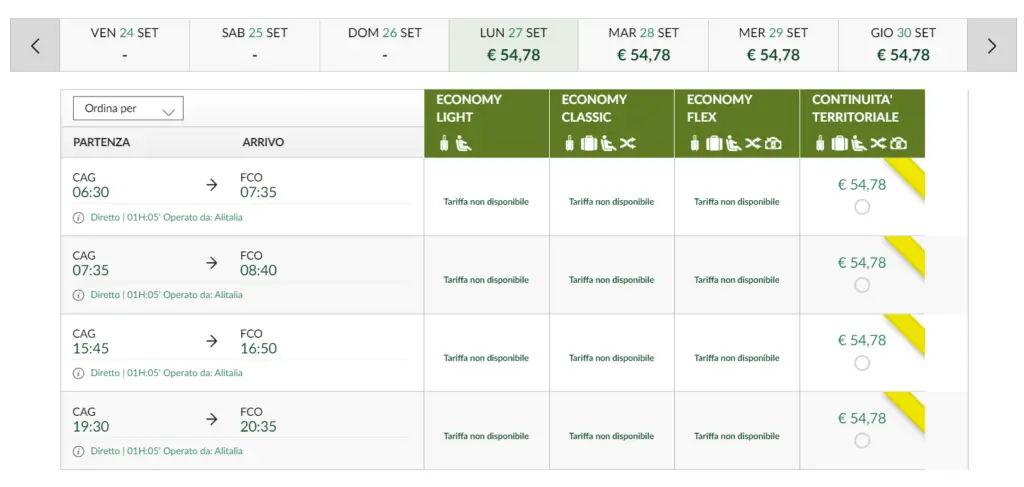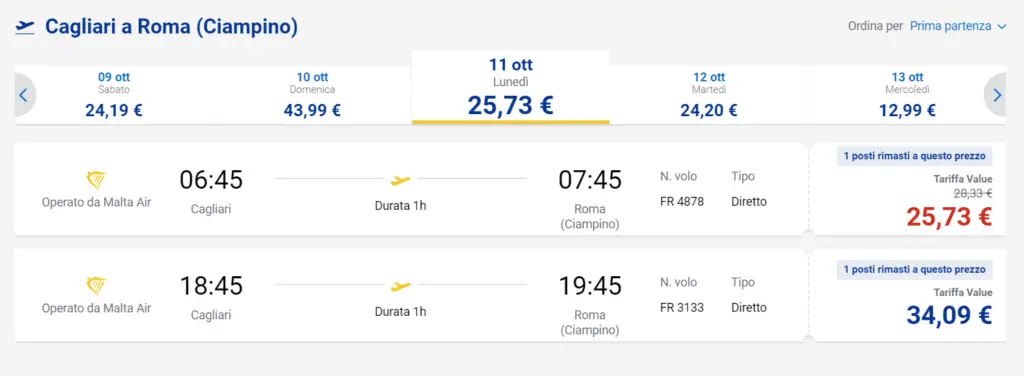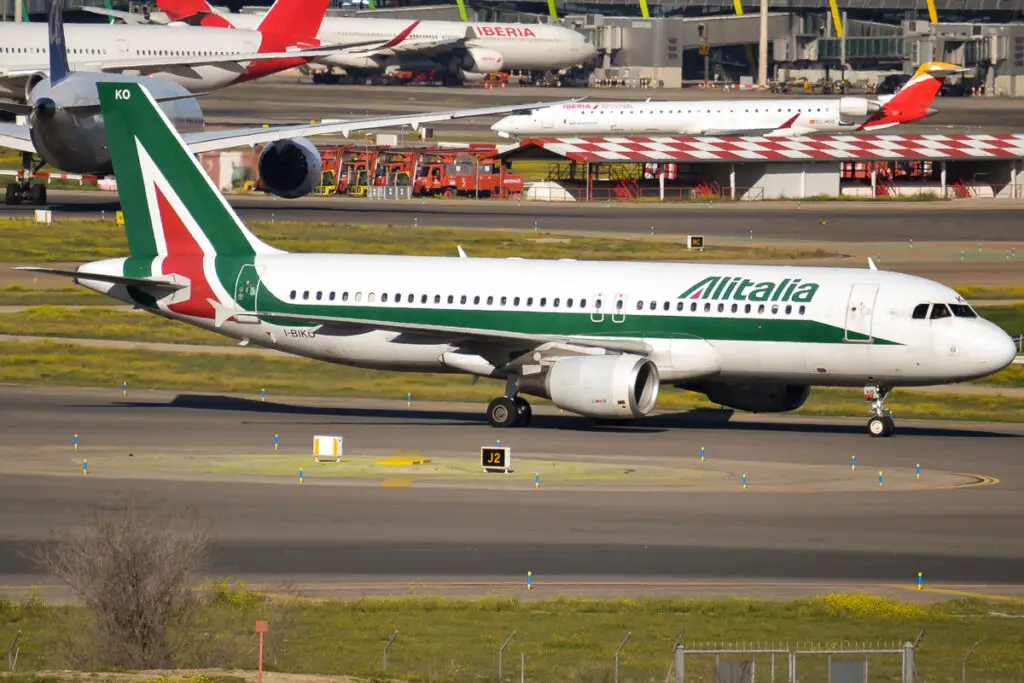The Sardinian regional government has called, this week, eleven airlines that operate locally to file proposals in six routes from the insular region in Italy to major cities in the continent, in a public obligation service known in the country as «continuità territoriale» (territorial continuity).
The six routes are currently serviced by Alitalia; the company, however, will cease its operations on October 14, leaving the subsidized services without an operator.
As such, the «emergency proceeding» will assess the best fit candidates to each service only until the date where Alitalia’s contract finishes – May 14, 2022. After that, a new call will be launched by the local government.
Such services connect Alghero, Cagliari and Olbia to Milano-Linate and Roma-Fiumicino airports.

These are the airlines invited: Air Malta, Blue Air, Blue Panorama/Luke Air, Danish Air Transport (DAT), easyJet, ITA (the government startup that will «succeed» Alitalia), Neos Air, Ryanair, Volotea, Vueling and Wizz Air.
To be included in the list, the current regulation requires the Region to «invite the airlines with network in the domestic routes [that are] potentially interested to manifest the irrevocable will to serve the air routes», the calls say. Therefore, it is right to infer the Regional government may have referred to «Malta Air», not «Air Malta» in the invitation, since only the former – a branch of the Ryanair Group – operates domestically in Italy.
Il Sole 24 Ore, Italy’s major economy newspaper, informs that the subsidies for the seven-month stint are on the order of EUR37 million in total, while the payment for the next two-year contract are around EUR46 million per year.
«The offers», the Region warned in a press release, «will be evaluated from the technical and economical point of view».
The size of the challenge
Alitalia’s Sardinia operations of continuità territoriale are sizeable.
According to data gathered by Aviacionline with the help of Cirium’s Diio Mi, in September Alitalia is offering, in the mentioned routes, 283,038 seats. This translates into 1,758 flights, mostly operated by the Airbus A319/A320/A321, and a small number of flights with the Embraer 175.
Luckily for the airlines invited, the contracts are being offered in a route-by-route case, which means, for example, Volotea could pick the Olbia-Fiumicino route while Ryanair could take the Alghero-Linate contract.
In the current terms, additionally, tickets in the continuità territoriale operations have a flat rate, the earnings of which all go to the airline.
While the idea is to promote an affordable service for the Sardinians who need to get to the continent, this can backfire, especially in the minds of revenue management officers of the ultra low-costs that serve Italy.
Effectively, this means that last-minute fares are predictable, but if a passenger books with much more time in advance, it could have gotten a way better deal. And this is exactly what happens in these routes.

While it might not be the best idea to book with Ryanair from Cagliari to Rome (in the lower-cost Ciampino airport) tomorrow, it definitely is, if you plan in advance.

So this lack of flexibility with respect to revenue management might put these ultra low-cost carriers away from doing offers for these routes, despite their large presence in the Italian market – and therefore a high number of resources and personnel in the country. In the end, ITA might get its first number of good contracts after all, as it will inherit aircraft from Alitalia.
Keep in mind the notice is very short and the size of operations is huge. On the other hand, the contracts start – and expire – right in the winter season, where demand in Europe is way lower and therefore the idleness of assets and personnel is higher.














